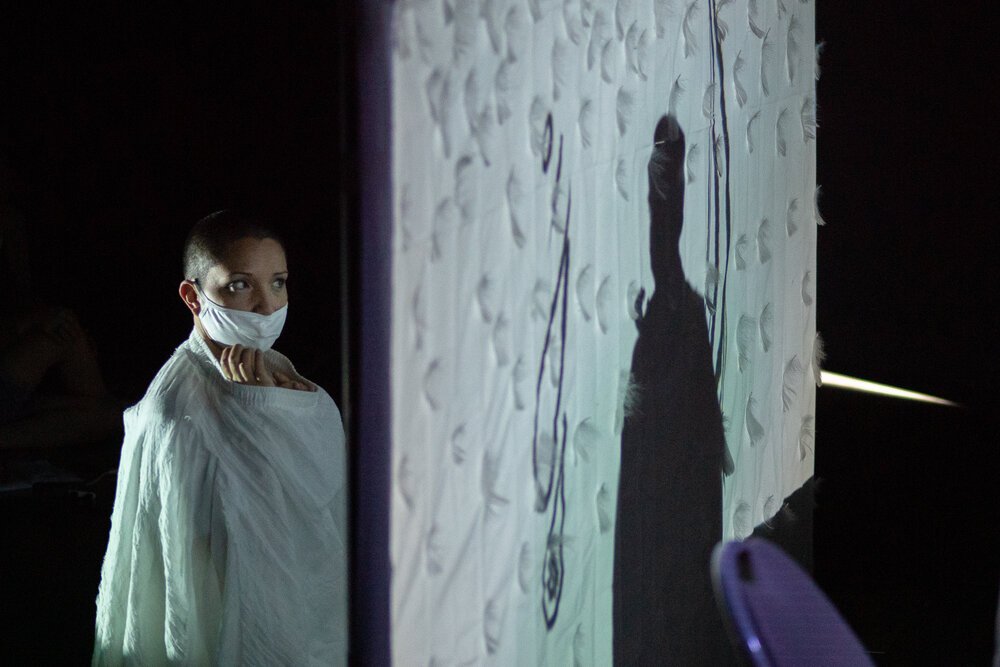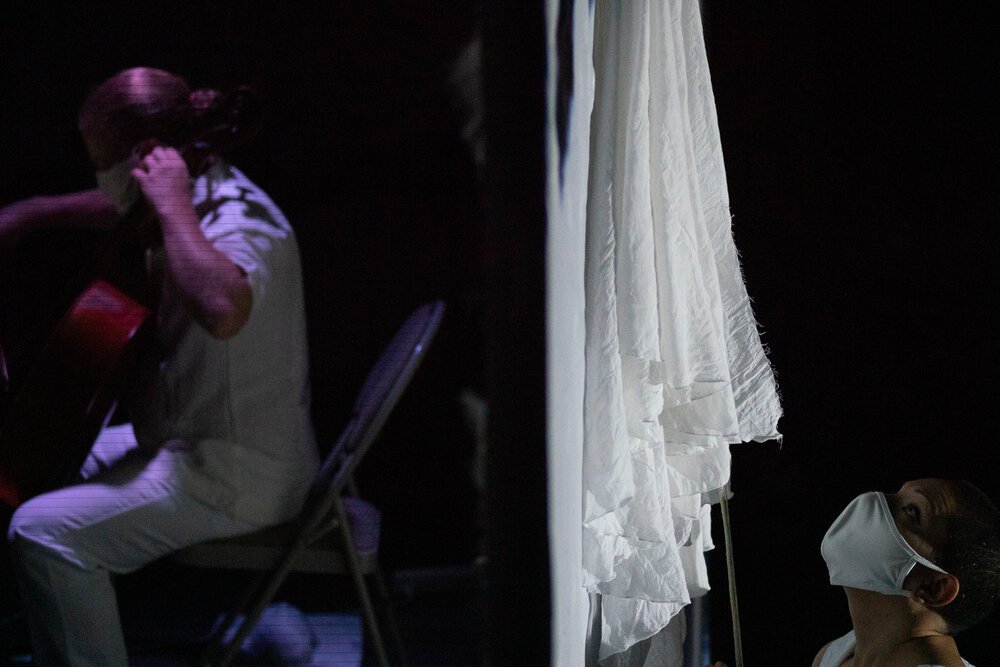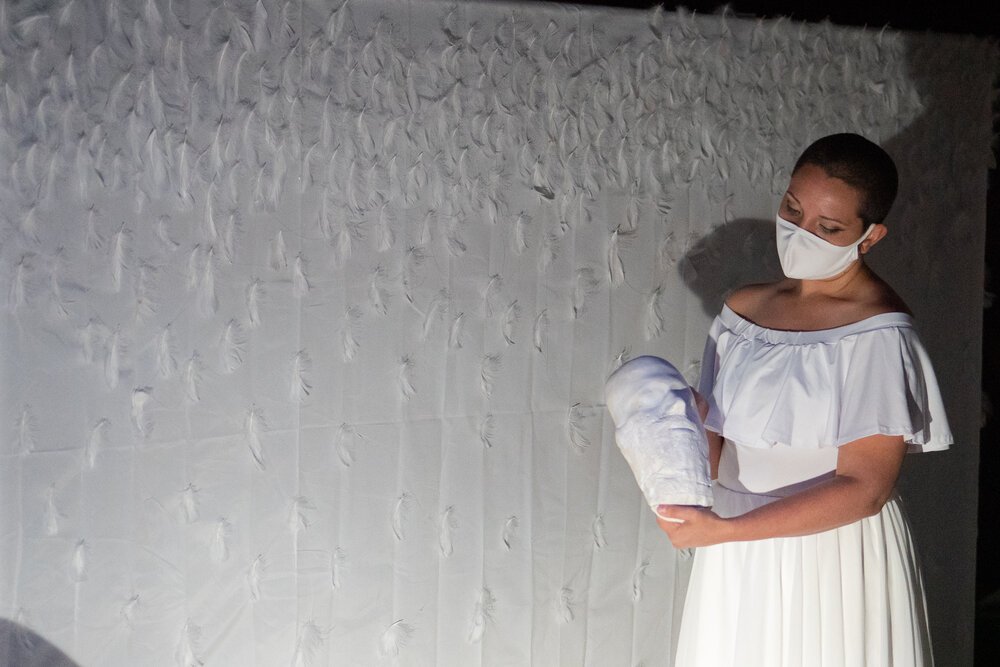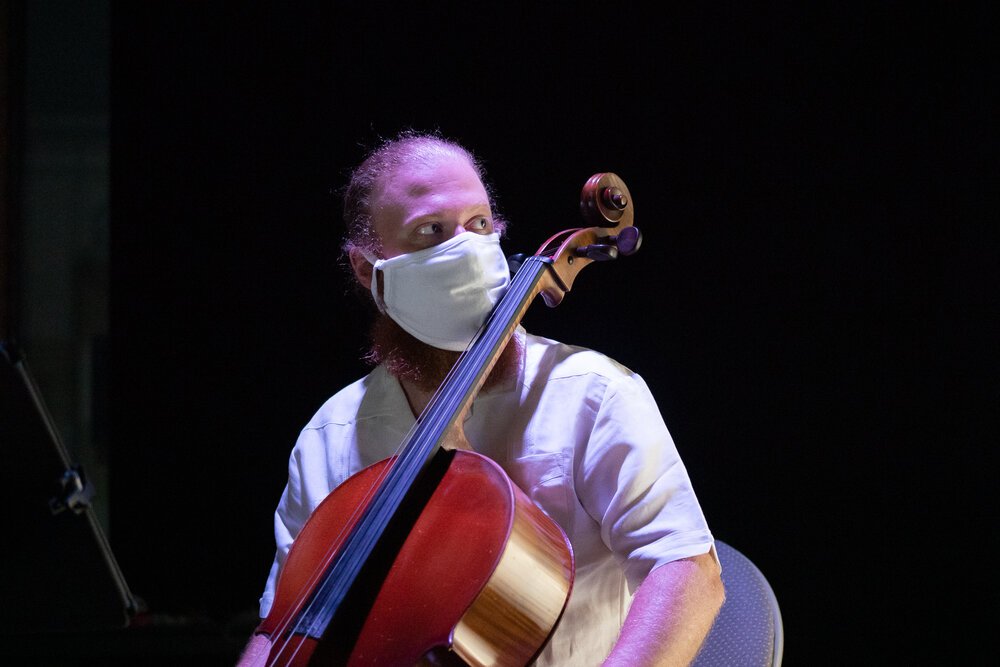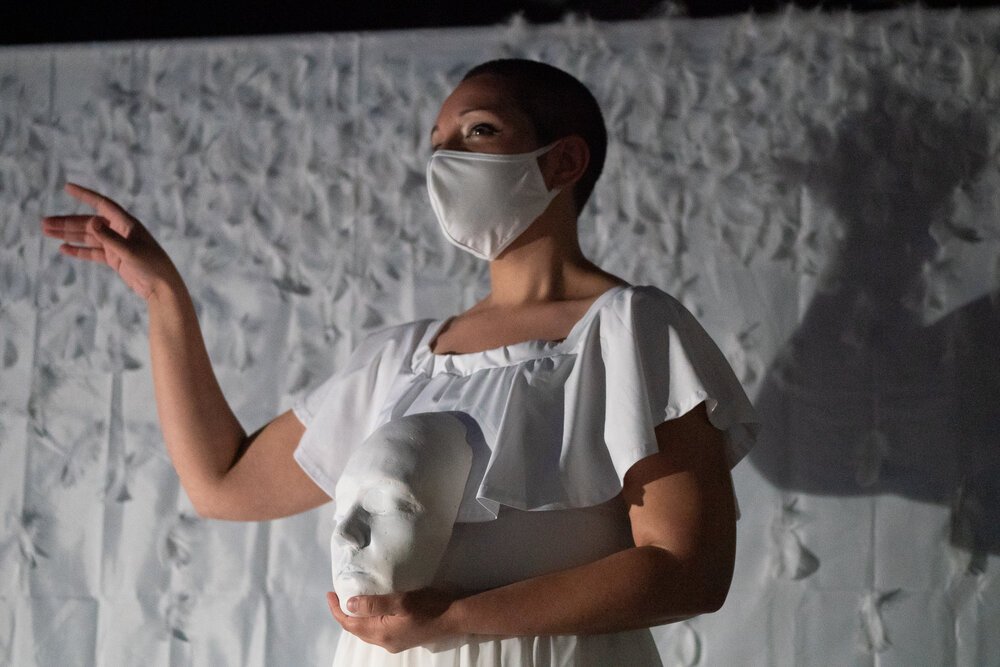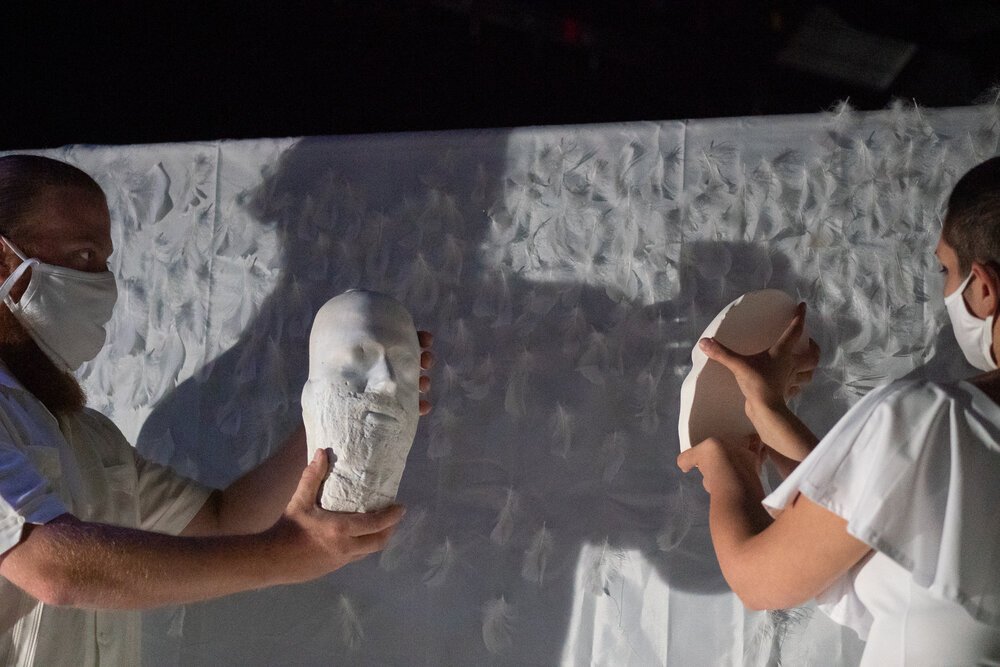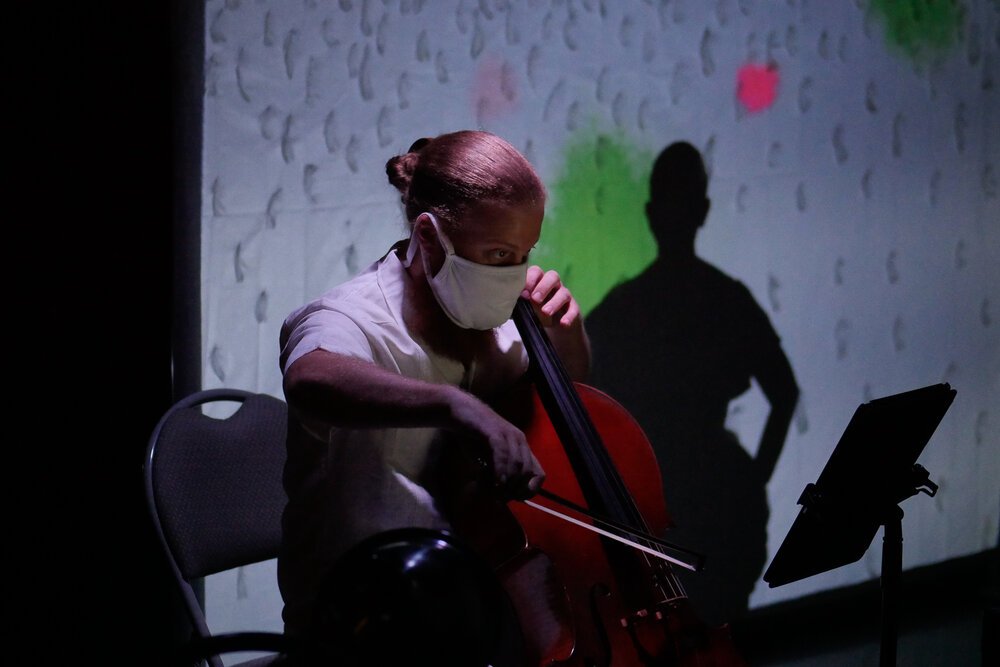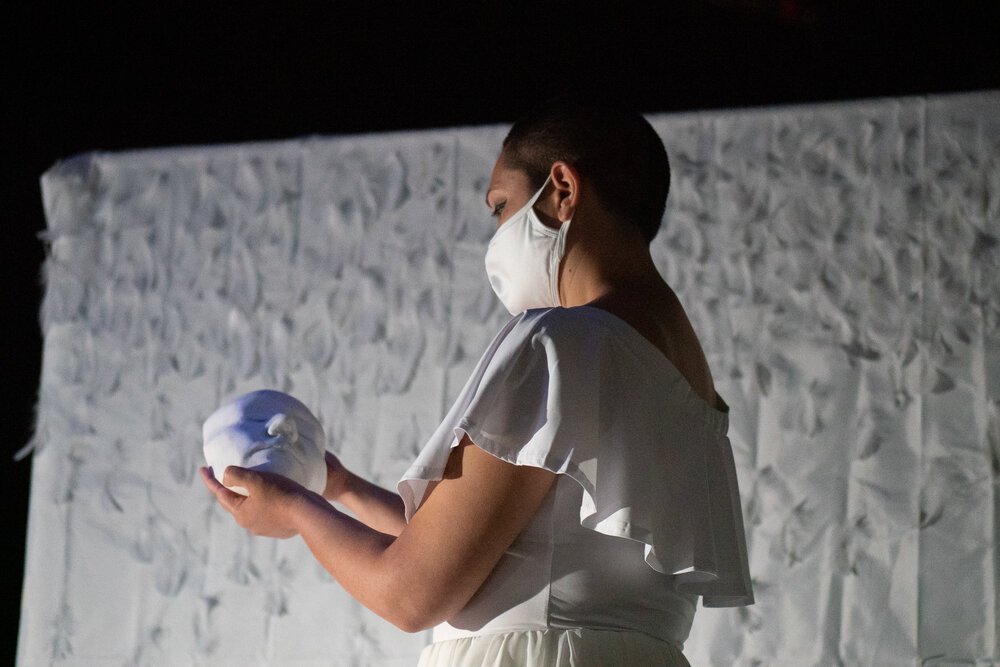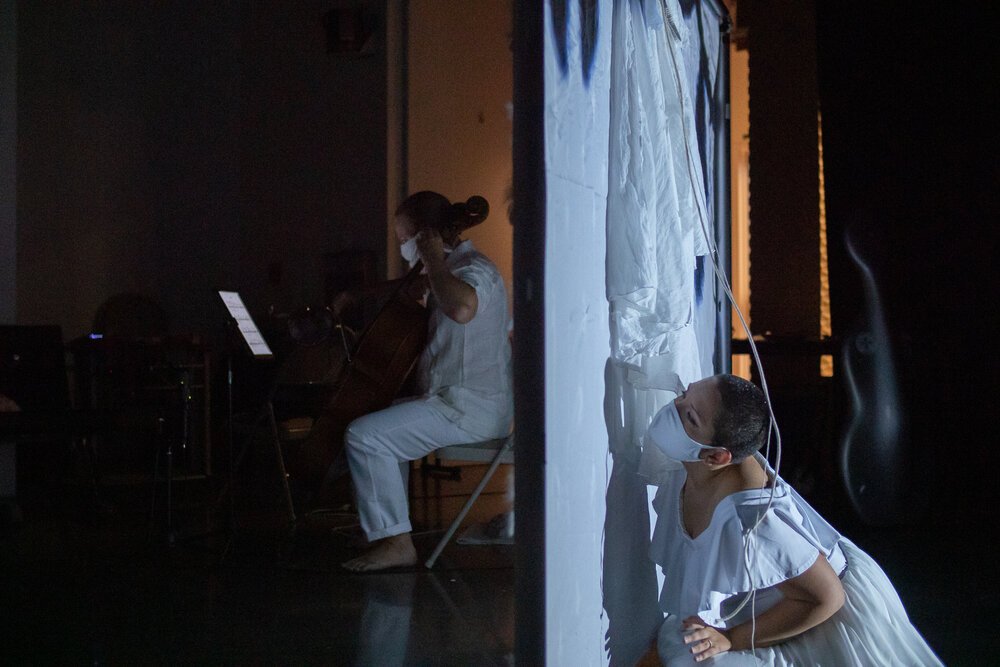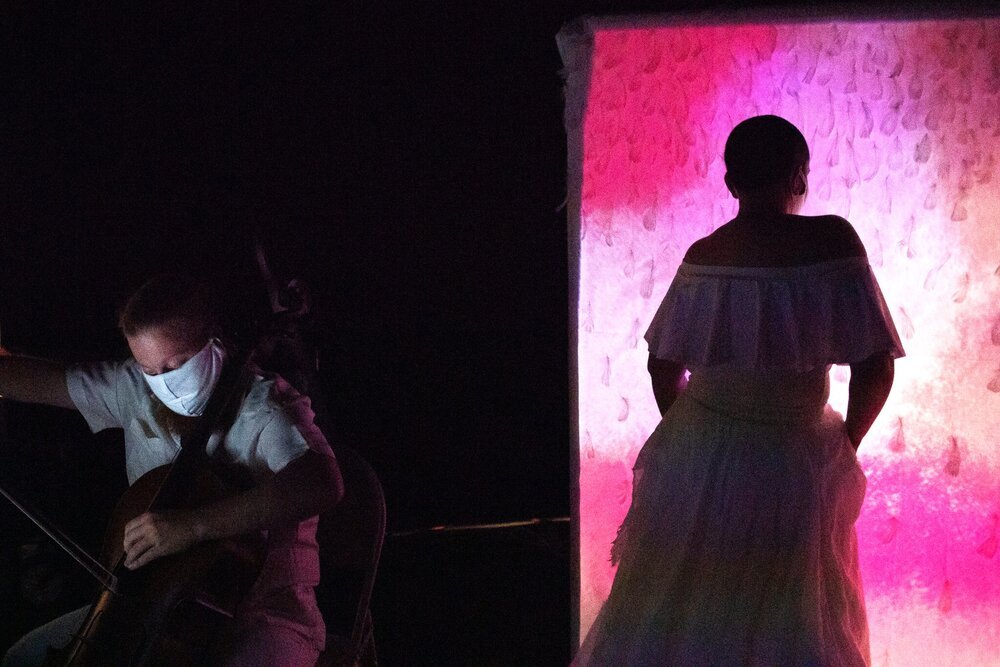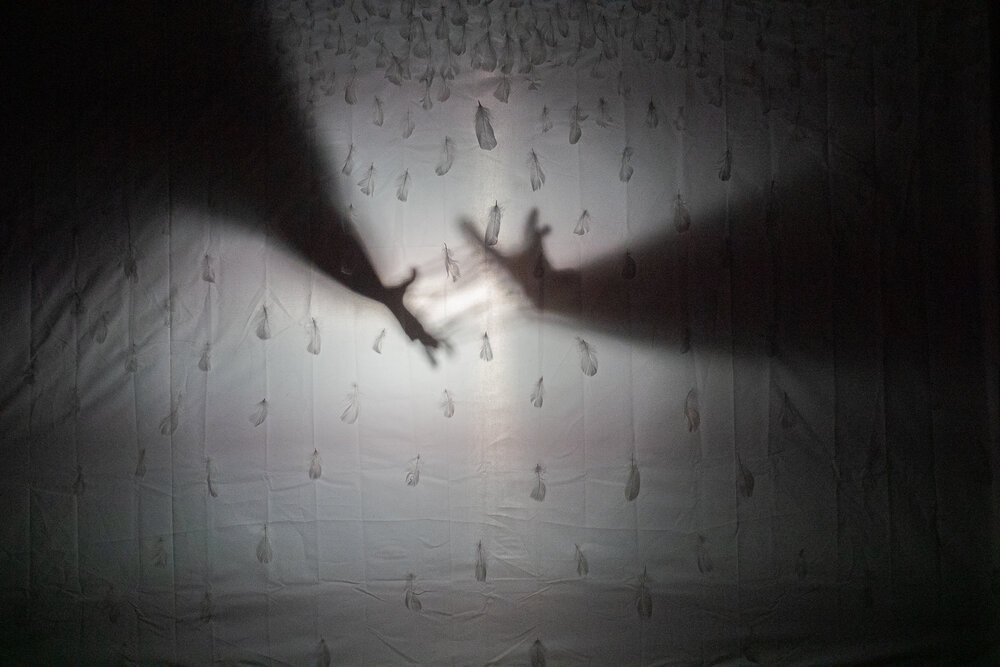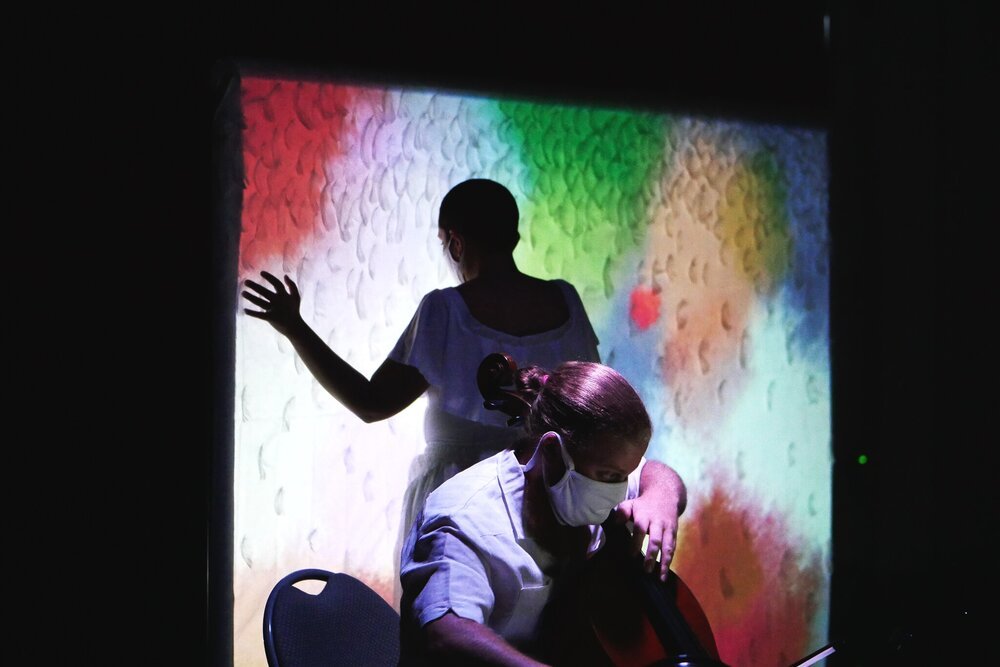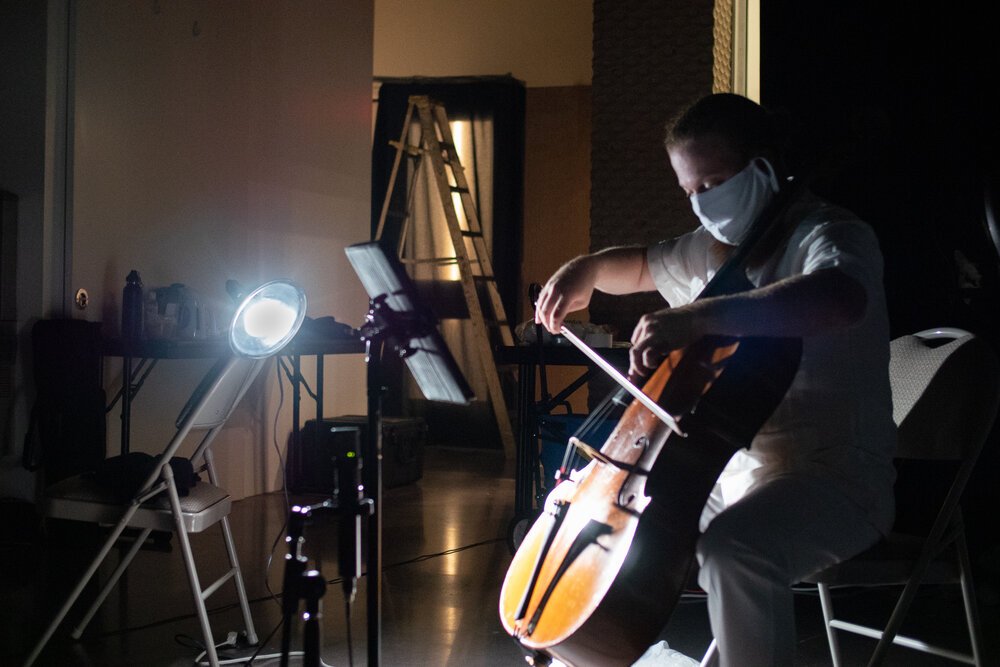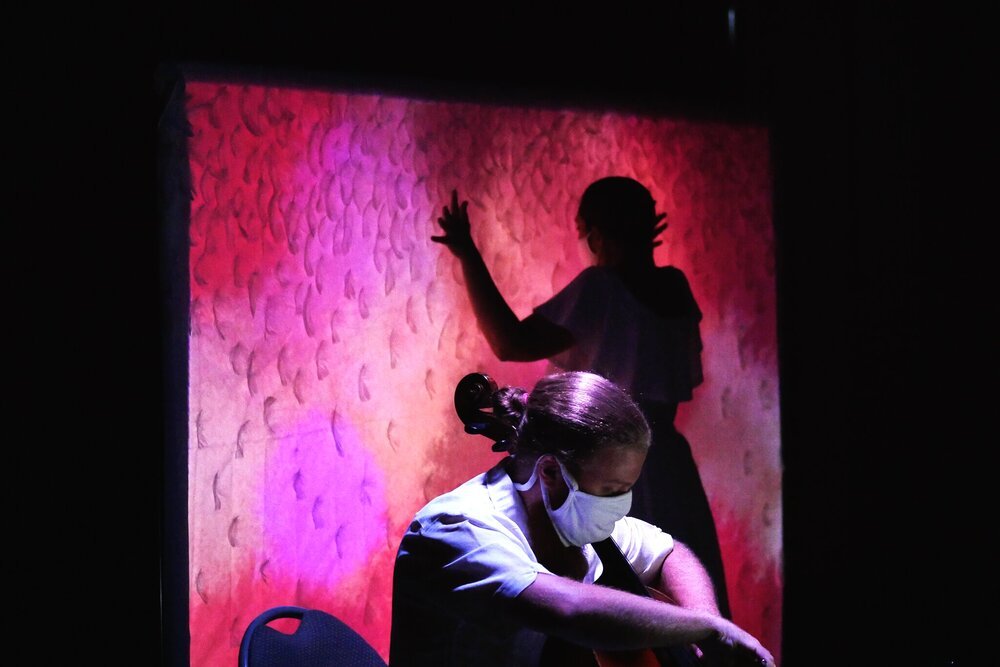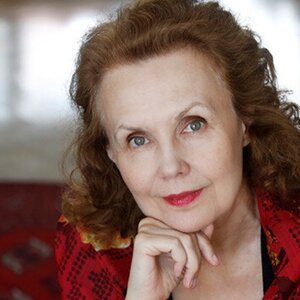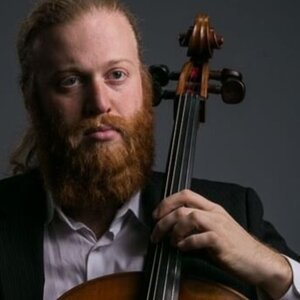PAPILLON
Music by Kaija Saariaho
An interdisciplinary work and a folkloric interpretation of a Cuban refugee, danced through the metaphor of the ever-changing life cycle of a butterfly.
Title: Papillon
Composer: Kaija Saariaho
Duration: 17min
Instrumentation: actor, vc
Language: Spanish & English
Status: Active, Touring
HISTORY
06/15/2020 - First workshop during COVID shutdown.
08/21 & 22/2020 - Final performance filmed in partnership with HC media. Private virtual viewing at the Virtual Guerilla Backyard Bash fundraiser.
10/30/2020 - A live-streamed live performance in partnership with HC Media. Part of the “Dreamwalker Live” program.
11/13-12/13/2020 - Presented in the Guerilla Underground video on demand streaming platform. Part of the “Dreamwalker Digital” program.
TOURING INFO
Performers: Aliana de la Guardia & Stephen Marotto
Lighting Design: Keithlyn Parkman
Director/Animator: Deniz Khateri
Theater Requirements: Flexible. Outdoors, galleries, warehouses, 3/4 thrust, round, or proscenium. Electricity required.
ABOUT THE OPERA
Papillon is a story of flight, freedom and transformation.
Beginning with “Mi madre era una gusana,” a poem by Aliana de la Guardia, it tells a folkloric account of her mother’s flight from Cuba, through the metaphor of the ever-changing life cycle of a butterfly.
Papillon features animation and direction by Iranian theater artist and animator Deniz Khateri with Cuban dance-inspired shadow theater and poetry by Aliana de la Guardia on top of a wonderfully fragile rendition of Kaija Saariaho's ephemeral Sept Papillons performed by Stephen Marotto.
Papillon is a Guerilla Opera production produced in partnership with HC Media, Haverhill, MA and made possible by a grant from the Haverhill Cultural Council, a local agency which is supported by the Mass Cultural Council, a state agency.
ABOUT THE COMPOSER
Kaija Saariaho is a prominent member of a group of Finnish artists who are making a worldwide impact. She studied in Helsinki, Fribourg and Paris At IRCAM, Saariaho developed techniques of computer-assisted composition and acquired fluency in working on tape and with live electronics. This experience influenced her approach to writing for orchestra, with its emphasis on the shaping of dense masses of sound in slow transformations. Significantly, her first orchestral piece, Verblendungen (1984), involves a gradual exchange of roles and character between orchestra and tape. And even the titles of her, linked, pair of orchestral works, Du Cristal (1989) and …à la Fumée (1990) suggest her preoccupation with colour and texture. Although much of her catalogue comprises chamber works, she has turned increasingly to larger forces and broader structures, such as Orion (2004), Laterna Magica (2008), Circle Map (2008). The detailed notation using harmonics, microtonaly and detailed continuum of sound extending from pure tone to unpitched noise – all features found in one of her most frequently performed works, Graal Théâtre for violin and orchestra (1994). Her catalogue also includes Aile du songe (2001), Notes on Light (2006), D’OM LE VRAI SENS (2010), Maan Varjot (2014). In 2015, Gerald Finley and Los Angeles Philharmonic Orchestra, conducted by Gustavo Dudamel, premier True Fire for baritone and orchestra. From later nineties, Saariaho has turned to opera, with outstanding success: L’Amour de Loin (2000), Adrian Mater (2006), Emilie (2010) and the oratorio La Passion de Simone (2006). Her opera Only the Sound Remains was premiered in March 2016 at The Dutch National Opera. Other performances will follow in Paris, Helsinki, Madrid and Toronto. Saariaho has claimed the major composing awards: Grawemeyer Award, Wihuri Prize, Nemmers Prize, Sonning Prize, Polar Music Prize. In 2015 she was the judge of the Toru Takemitsu Composition Award. Kaija Saariaho’s harp concerto Trans was premiered in August 2016 by Xavier de Maistre and The Tokyo Symphony Orchestra, conducted by Ernest Martinez-Izquierdo at the Suntory Hall, Tokyo. (saariaho.org)
CONTACT
To bring this piece to your community contact artistic@guerillaopera.org.
DIRECTOR’S NOTE
“How do we perceive music and theater through culture and heritage inherited in the body?” “How much of ourselves do we give up in order to become blank slates for the sake of the composer and their vision alone?” “How much more of ourselves, our lives, our personal experiences, can we give to them and let shine through when interpreting a work?”
A performer will always experience a work as a part of their self. When their experience of the world can shine through in a performance and in the work itself, it heightens context for the work and grounds it firmly in the world we live in today.
Feeling restricted and alone during isolation I spent a lot of time outdoors meditating on the word “flight.” This word and the thoughts it provokes are always on my mind to some degree, as my family did “flee” from their country, where they were also restricted and alone, for different reasons.
In looking for repertoire evocative of this abstract idea, our ensemble member, Stephen Marotto, suggested “Sept papillons.” The surreal nature of the piece brings many shapes and colors to the imagination, and immediately thought Deniz Khateri and her incredible work in animation would be the perfect pairing.
I had in mind to utilize body movements from Latin dance and learned some new movement taken from Yoruba, an Afro-Cuban folkloric style of dance with large flowing skirts and arm movements that resemble the flapping of butterfly wings.
We watch as the anthropomorphized caterpillar with winding circular movements transforms into a beautiful dancing butterfly, dancing harder and harder as the animated wings flap faster until exhaustion from a frantic effort to fly.
Finally, we added the poem “Mi madre era una gusana,” inspired by a story my mother told to me. “Gusano” (worm) is the dehumanizing name with which non-conformists were bullied when she lived in Cuba. In the story “my mother was a worm,” but grows wings and flies away. This transforms this work from an abstract depiction of a butterfly to a metaphorical, folkloric story of my mother’s flight from her homeland and the strength, struggle and transformation it takes to achieve the act of fleeing.
Aliana de la Guardia
